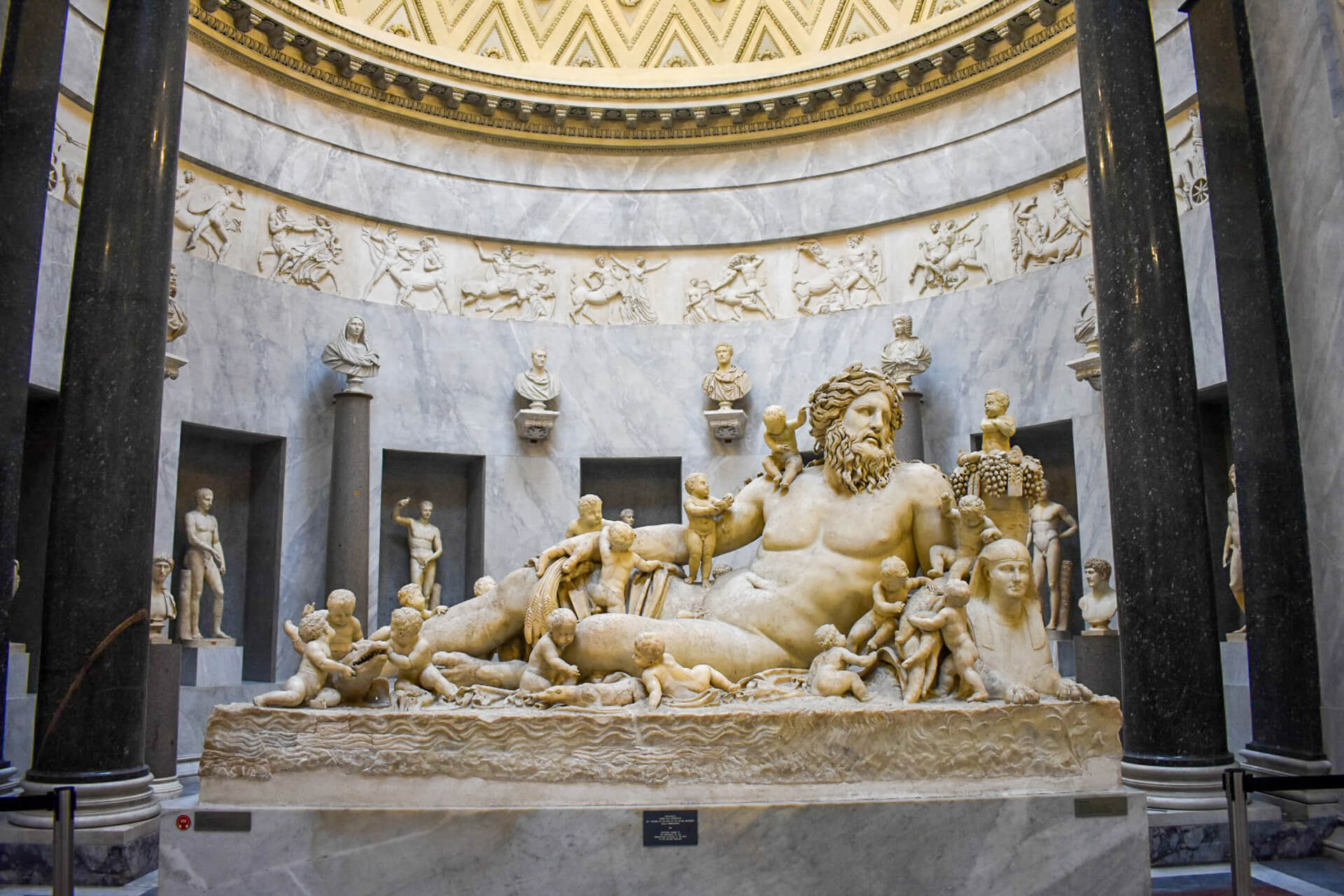This article contains affiliate links. Learn more in our affiliate disclosure.
When we first started planning our trip to Rome, we had no idea how much the timing would shape the whole experience — from how crowded the streets felt to whether you could actually enjoy gelato without melting in the sun.
After visiting in the spring, we quickly learned that Rome can feel like a completely different city depending on when you go.
Some months are perfect for slow walks through Trastevere and long afternoons at the Forum, while others are better if you want cheaper stays or quieter neighbourhoods.
And if you’re planning your itinerary, it’s worth checking out our best things to do in Rome guide so you know what’s worth prioritising each season. For choosing the right base, our where to stay in Rome breakdown makes your planning much easier too.
If you want to compare areas and hotel prices across seasons, our Where to stay in Rome guide breaks everything down clearly.
In this guide, we’ll help you find the best time to visit Rome — based on real experience, local insights, and what it actually feels like to be there.

Key Highlights
🌦️ Seasons: spring, summer, autumn, winter
🌤️ Best months: March–May and September–October
👥 Crowd levels: peak in July–August, quiet in winter
🎉 Notable events: Easter celebrations, Christmas markets
💡 Good to know: Popular sights like the Vatican and the Colosseum sell out fast in peak months
Quick Overview
The best time to visit Rome is in spring (March–May) and autumn (September–October) when the city feels most comfortable — warm days, clear skies, and a lively atmosphere without the summer crowds and heat.
These months are perfect for wandering between sights, enjoying outdoor terraces, and actually seeing the city at its best.
Summer brings long days but also higher prices and heavy crowds, while winter offers quieter streets and a more authentic local vibe, but worse weather and rainy days.
In a hurry?
These are our top hotels in Rome we’d book again
⭐️⭐️⭐️ Ara di Marte Suites (our top pick) – Beautifully designed stay just steps from the Spanish Steps. Nature-inspired rooms & spacious private terrace.
👉 See prices & availability →
⭐️⭐️ Hotel Artemis – A polished hotel about 10 minutes from the Colosseum, offering bright, elegant rooms with classic touches and modern bathrooms.
👉 See prices & availability →
⭐️ Suites Trastevere – A cosy B&B in the heart of Trastevere, known for its creatively mural-decorated rooms and friendly atmosphere.
👉 See prices & availability →
Our Experience
We visited Rome in late February, and honestly, it surprised us in the best way. The days were cooler (still warmer than back home), but the city felt calm and easy to explore — no long lines, no rushing, just slow walks through the historic center and room to enjoy every landmark.
February felt more local and relaxed, and it’s a time we’d happily choose again if you prefer quieter streets and better prices.
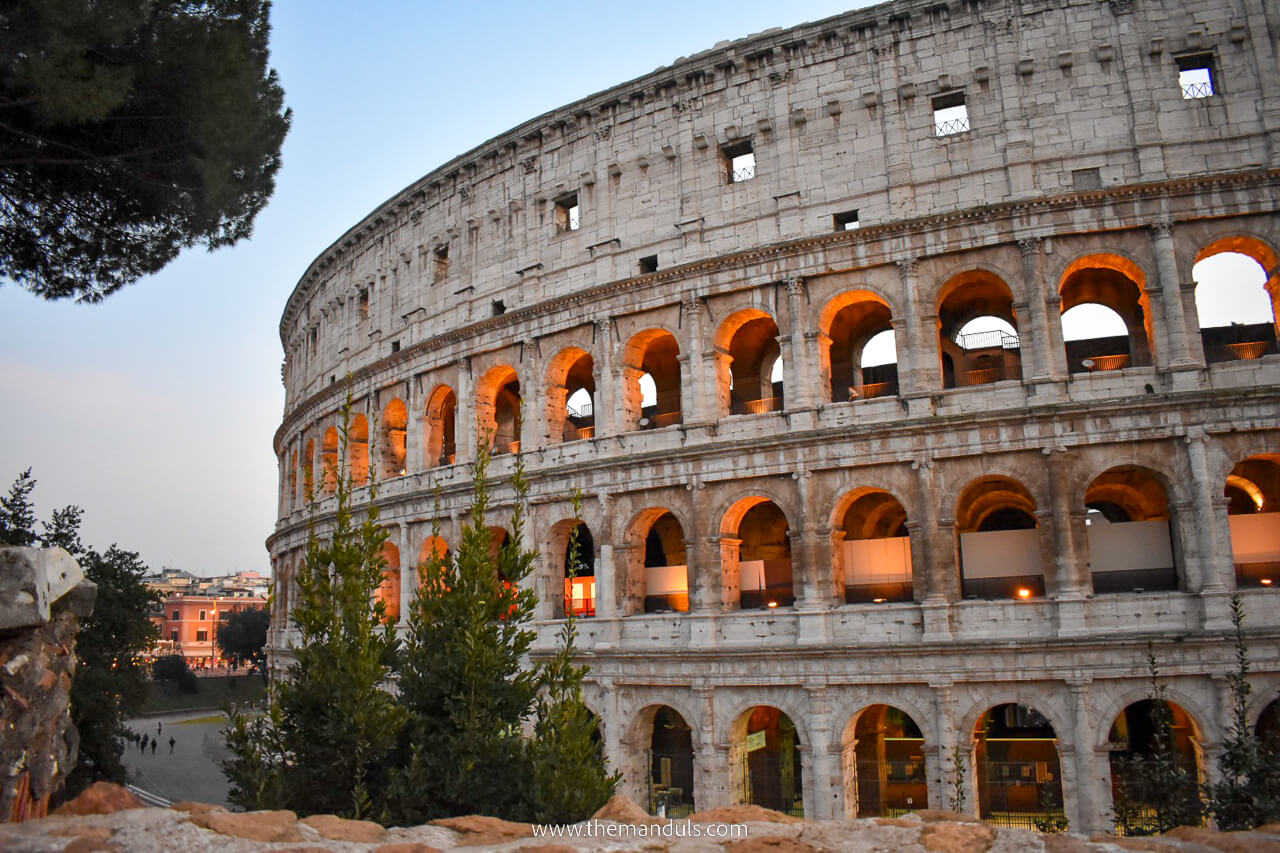
Best Time to Visit Rome
Spring (March – May)
Spring is when Rome really hits its stride — warm days, soft light, and a city that feels alive again without the summer chaos. We’ve visited Rome in early spring on one of our trips to Italy, and the energy was incredible: cafés reopening their outdoor seating, longer days, and that perfect balance of buzz and peace.
Temperatures hover around 15–24°C, rain is possible but usually light, humidity is low, and daylight stretches enough to fit in plenty of sightseeing without rushing.

Crowds start returning, but it never feels overwhelming except around Easter week. This season suits travellers who want to explore on foot, enjoy photography with softer light, and avoid the peak-season heat.
Pros: comfortable weather, great for sightseeing, longer days.
Cons: Easter crowds, occasional showers.
Monthly Overview
- March: Calm and mild with some unpredictable weather; great for relaxed sightseeing and lower prices.
- April: One of the most beautiful months — blooming trees, outdoor dining, and lively streets; Easter week is busy.
- May: Warm, sunny, and energetic; ideal for long walks and golden-hour photos; crowds and prices start rising.
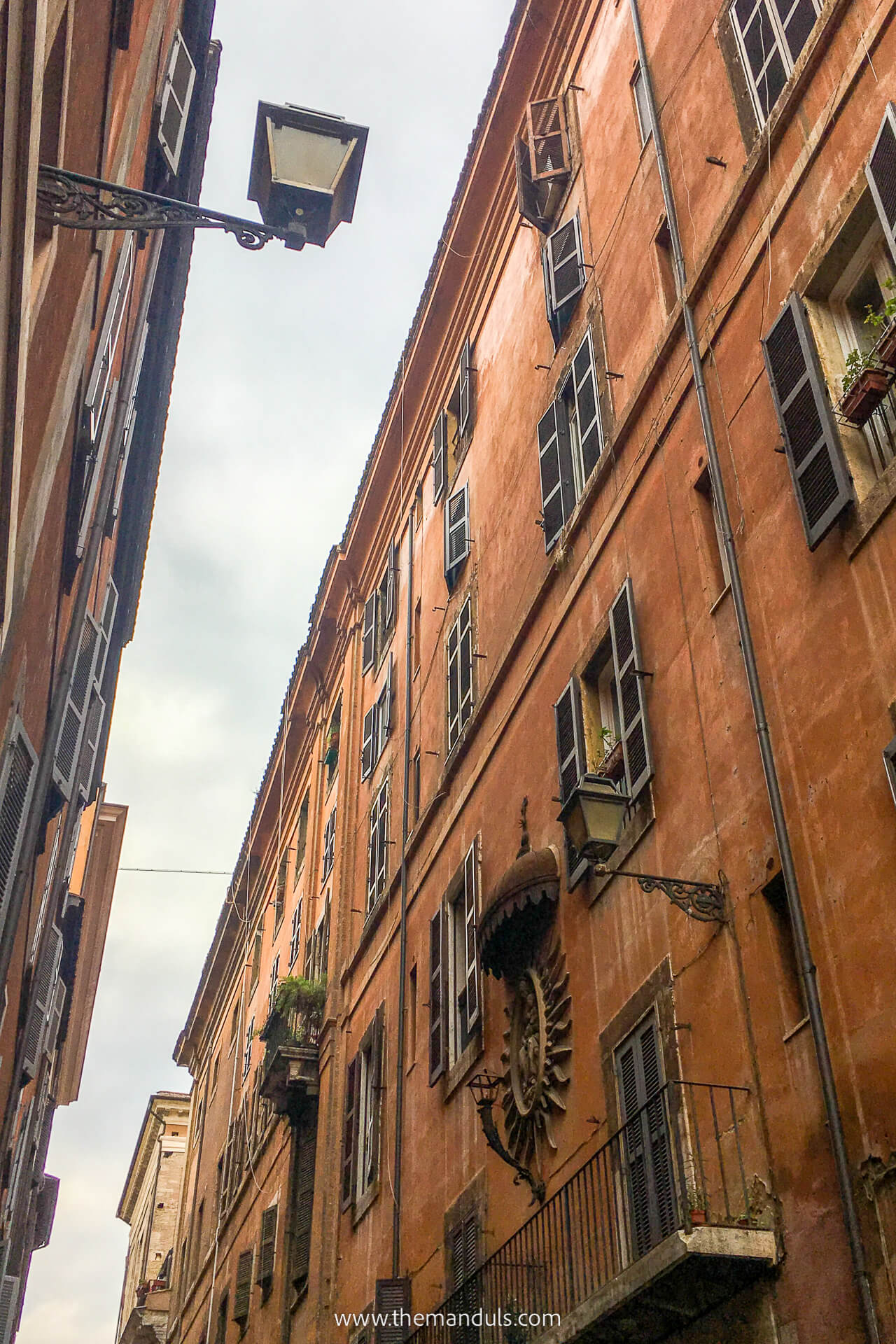
Summer (June–August)
Summer in Rome is intense — long, bright days, lively streets, and the kind of heat that hits you the moment you step outside. We’ve experienced Italy in peak summer before, and Rome feels exactly like you’d expect: energetic, beautiful, but also demanding if you’re not used to high temperatures.
Expect daytime highs between 28–34°C, strong sun, and higher humidity, especially in July and August.
Evenings are warm and perfect for slow strolls, rooftop drinks, and exploring once the heat eases. Midday sightseeing can be tough, so early mornings and late afternoons quickly become the best times to be out.
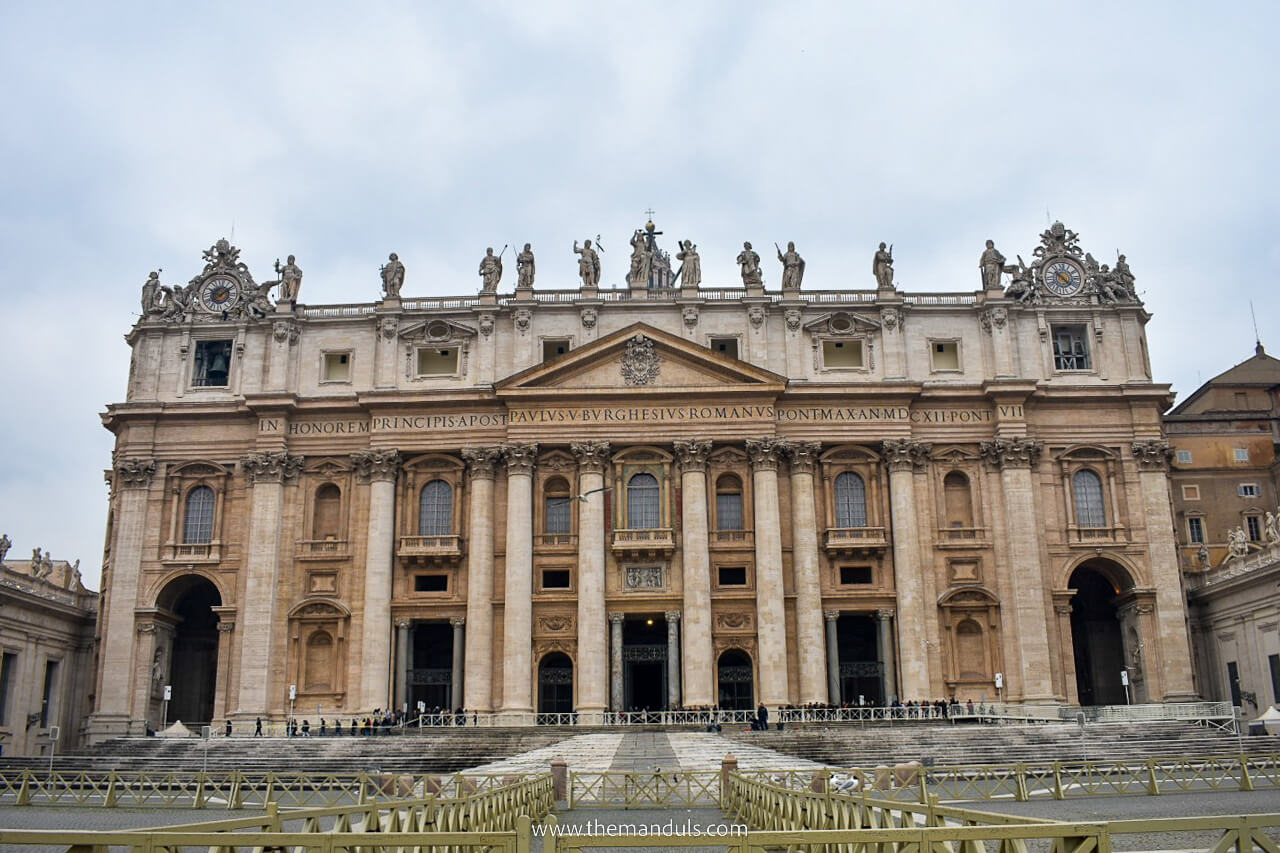
Crowds are at their peak — especially around the Vatican, Colosseum, Trevi Fountain, and the big piazzas. Prices for accommodation jump, and booking tickets in advance isn’t optional.
Pros: long daylight hours, lively streets, warm evenings
Cons: strong heat, high prices, heavy crowds
Monthly Overview
- June: Warm but still manageable; great for late sunsets, outdoor dining, and evening sightseeing before the peak heat sets in.
- July: Hot, busy, and energetic; crowds fill the main sights, and early mornings are best for exploring. Nighttime feels magical.
- August: The hottest month with intense midday heat; many locals leave the city, but visitor numbers stay high. Evenings are the highlight.
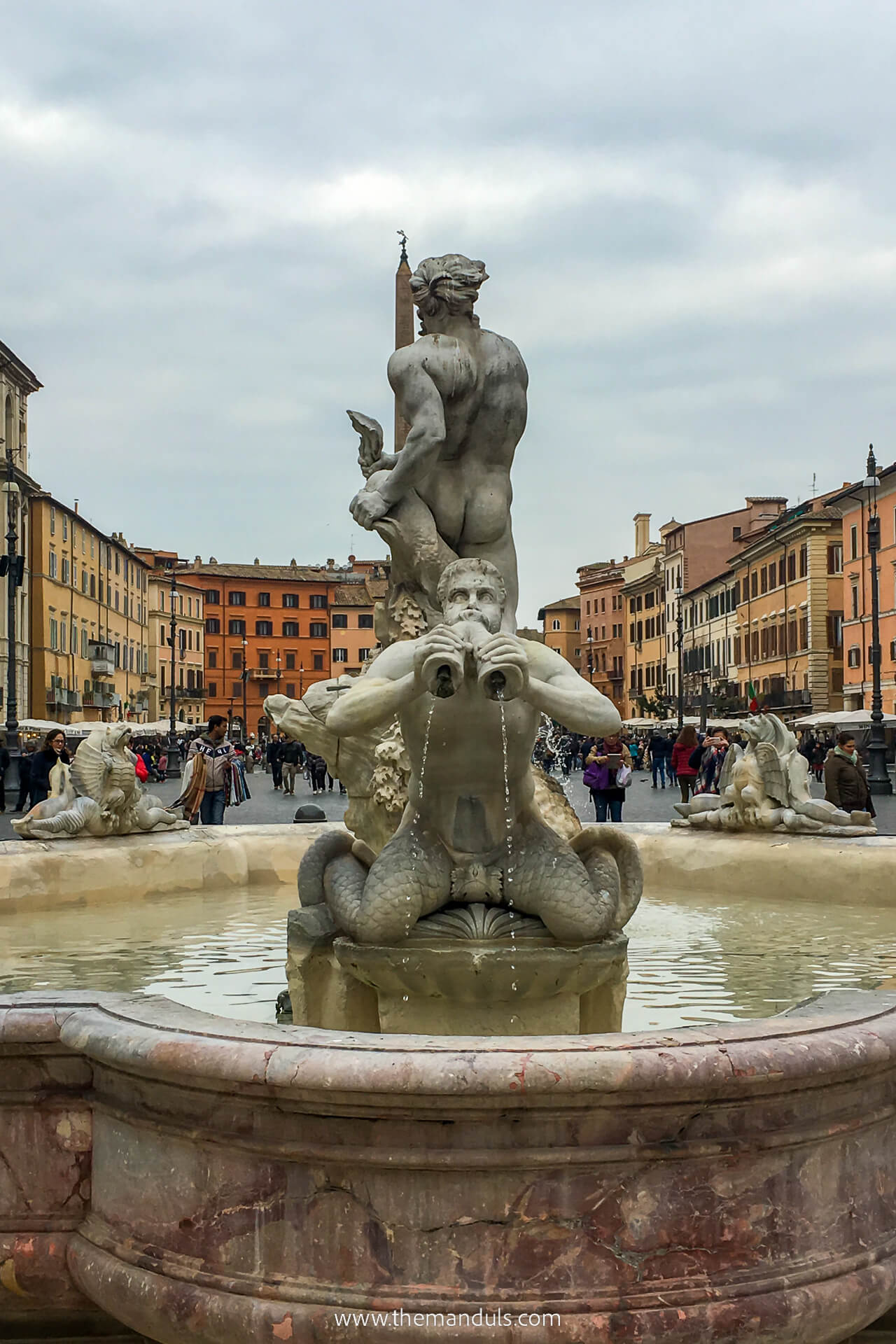
Autumn (September – November)
Autumn is one of the most rewarding times to visit Rome — warm days, softer light, and a calmer pace after the peak-summer rush. We’ve been in Italy during early autumn, and loved it for the comfortable temperatures and quieter days.
Expect daytime temperatures around 18–27°C in September and October, gradually cooling to 10–17°C by November. Rain becomes more common later in the season, but humidity stays manageable, and sightseeing feels comfortable throughout most days.

This season suits travellers who want pleasant weather, beautiful photography conditions, and a more relaxed atmosphere without sacrificing energy or things to do.
Pros: comfortable weather, softer light, fewer crowds than summer.
Cons: higher chance of rain in November, shorter days toward late autumn.
Monthly Overview
- September: Warm, lively, and still summery; great for long walks, outdoor cafés, and evening photos. Crowds remain but feel lighter than August.
- October: One of the best months — mild days, great colours, and ideal sightseeing conditions. A sweet spot between weather and crowd levels.
- November: Cooler and wetter but peaceful; great for museums, food experiences, and exploring without rush.

Winter (December – February)
Winter in Rome feels surprisingly calm and easygoing — cool days, quieter streets, and a more local vibe that you don’t get in the busier months.
We visited in February, and it was one of our favourite experiences: no long lines, comfortable walking weather won us over. If you enjoy slower travel and fewer crowds, this season works beautifully.
Temperatures usually sit between 6–13°C, with crisp mornings and mild afternoons. Rain is possible, but it rarely lasts all day, and humidity is much lower than in summer. Crowds drop significantly, except during Christmas and New Year, when the city becomes festive and lively.

Winter suits travellers who want a quieter Rome, better accommodation prices, and more space at the main sights.
Pros: fewer crowds, great prices
Cons: shorter days, chilly evenings, busier holidays
Monthly Overview
- December: Festive, cozy, and lively around Christmas markets and decorations; mild days mixed with occasional rain.
- January: The quietest month of the year — excellent for museums, photography, and low hotel prices.
- February: Cool but comfortable, with very manageable crowds; great for exploring without rush and enjoying Rome’s local side.
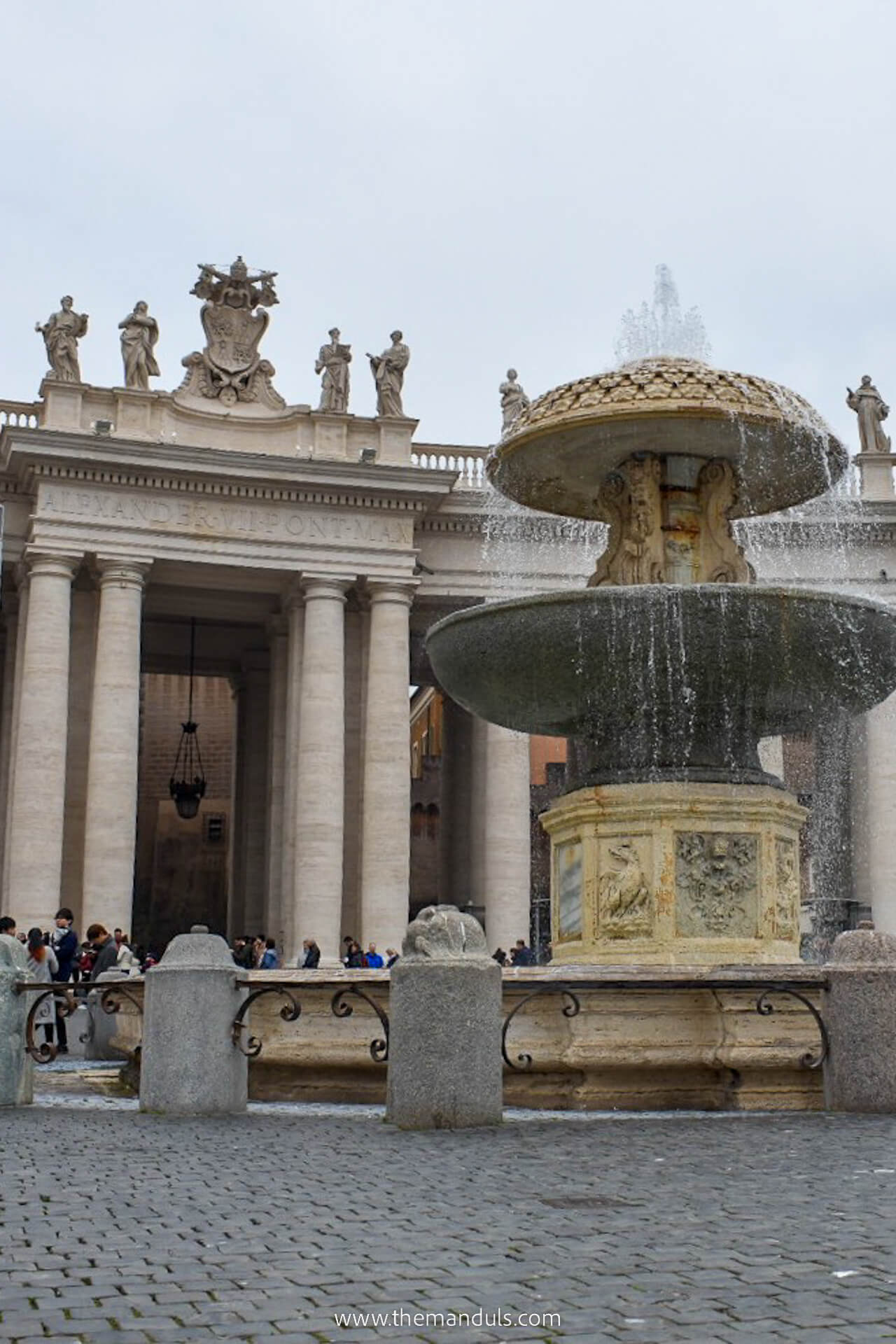
Crowds & Prices
Rome’s crowds and prices swing a lot throughout the year, and timing makes a big difference to your budget and overall experience.
July–August is the most expensive period — school holidays, peak tourism, and hot weather all push hotel rates up, and attraction tickets sell out quickly. Flights also rise during this window, so booking months ahead is smart.
Spring and autumn follow closely behind with steady crowds and mid-to-high prices, especially around Easter and October weekends.
If you’re after value, winter (except Christmas/New Year) is the sweet spot. Hotels drop noticeably, flights are cheaper, and you’ll find far fewer people at major sights. It’s one of the easiest seasons to visit Rome spontaneously.
TIP: The busier the month, the earlier you should book accommodation and key attractions. And if you’re travelling in July–August, secure trains and major tickets early — it saves both money and stress.

Events & Festivals
- Easter Week (March/April): One of Rome’s biggest annual events, with ceremonies, outdoor masses, and a special atmosphere around the Vatican. Beautiful to witness but brings heavy crowds.
- Rome’s Birthday – Natale di Roma (April 21): Historical reenactments, parades, and fireworks celebrating the city’s founding; a lively and very local-feeling event.
- Estate Romana (June–August): A long summer festival with open-air concerts, food events, and cultural shows across the city — perfect for vibrant evenings.
- Festa di San Giovanni (June 24): Concerts and street events around the Lateran Basilica; a more traditional celebration with a local vibe.
- Christmas & New Year (December): Festive lights, markets, decorations, and a cozy atmosphere that makes winter strolls around Rome feel magical.

Worst Time to Visit Rome
The toughest time to visit Rome is July and August, mainly because of the intense heat (often above 32–34°C) and the huge crowds around the main attractions. Midday sightseeing can feel exhausting, accommodation prices peak, and popular tickets sell out fast.
November can also feel less ideal for some travellers — it’s cooler, wetter, and the daylight is shorter, which makes long walking days tricky if you’re trying to fit in a lot of sightseeing.
That said, these months still work for certain types of travellers. Summer is great if you love long days, busy streets, and lively evenings, while November is perfect for photographers, museum lovers, and anyone looking for good prices and quieter sights.

FAQ
Yes — three days is enough to see the main highlights like the Colosseum, Vatican, Trevi Fountain, and Trastevere. You’ll stay busy, but it’s totally doable with a good plan.
November is usually the wettest, with more frequent showers and shorter days. It’s still manageable, but bring a light jacket and flexible plans.
July and August can feel very hot, especially midday. Exploring early in the morning or in the evening helps a lot, and sights are much more pleasant then.
January is typically the best month for budget travellers — lower hotel prices, cheaper flights, and the quietest crowds of the year.
Final Thoughts
If we had to pick one perfect moment to experience Rome, we’d go for spring or early autumn — warm days and comfortable crowds make wandering through piazzas and ancient streets feel easy.
But honestly, Rome has something special in every season. Whether you want quiet museum days in winter, long summer nights, or golden-hour walks in October, the city always delivers — it just depends on what you’re after.

